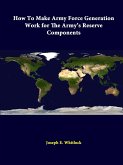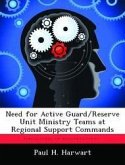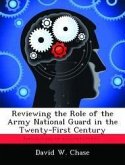Since the 9/11 attacks on the United States, The Army and Reserve Components have had to react to an entirely new paradigm. The U.S. Army not only had to fight a new kind of war, it has to rethink the entire future of armed conflict and reassess and re-evaluate how to engage the enemies of this nation. In order to meet these new challenges the U.S. Army has been forced to look upon the National Guard and Reserve as part of the operational reserve force. This is a significant shift from the past practice of utilizing the Reserve Component forces as part of the nation's "strategic reserve." As part of the U.S. Army operational reserve, Reserve Component forces will be called upon on a regular basis to actively participate along-side active duty units. In order to accomplish this paradigm shift, the U.S. Army has created a force management model called ARFORGEN, Army Force Generation Model. This model is to create a system that provides units in a predictable and reliable manner to support on going operations. The question of this thesis is whether or not the ARFORGEN model is an appropriate model for the reserve component forces. The model is designed for both active duty and reserve component forces. The findings of this study are that the ARFORGEN model is a good starting point for the transformation of the U.S. Army and Reserve Components. There are long term implications that may or may not need to be addressed in the future, especially with regard to equipping, manning and rebalancing the forces. There are many variables, such as funding, recruiting, soldier retention, training, equipping and future operations that have yet come into effect that may impact the ARFORGEN model and the transformation of the reserve component forces into a truly sustainable operational force.








